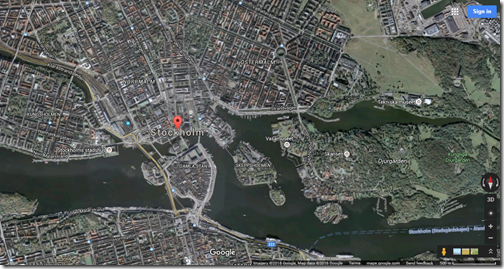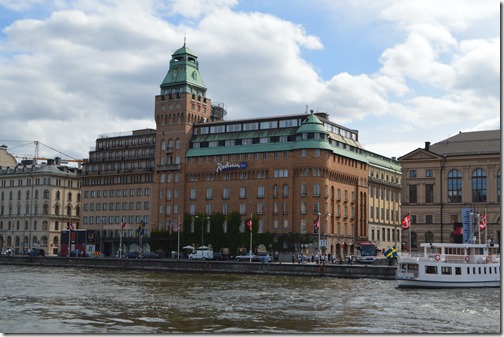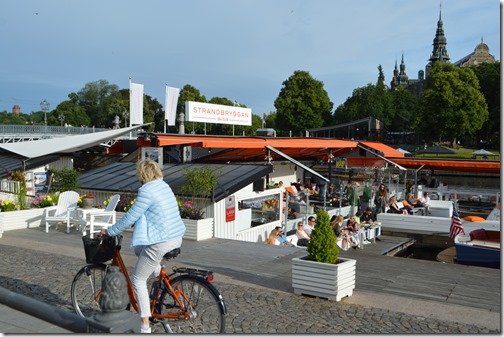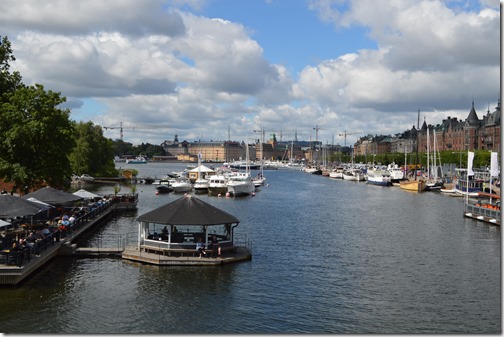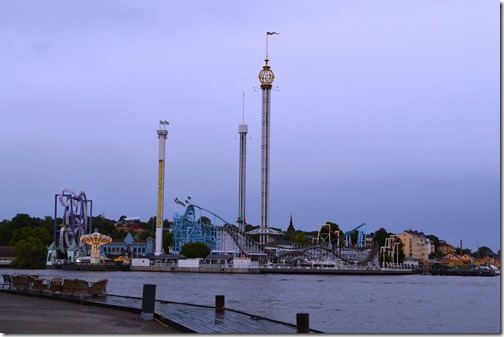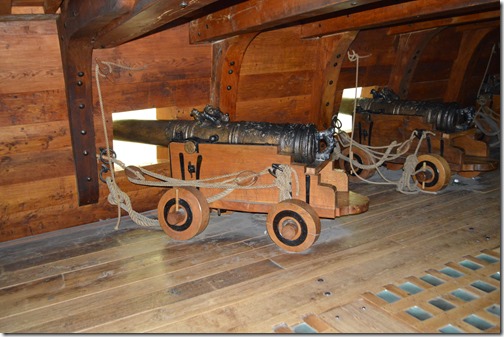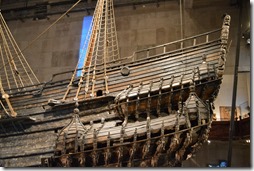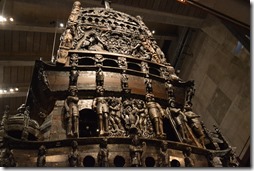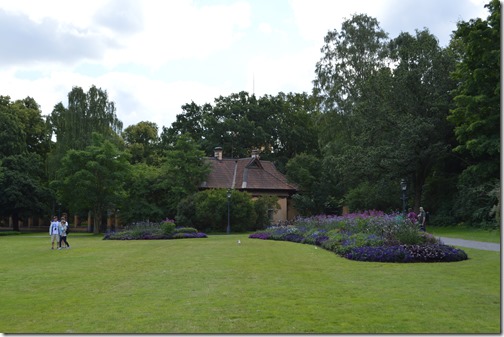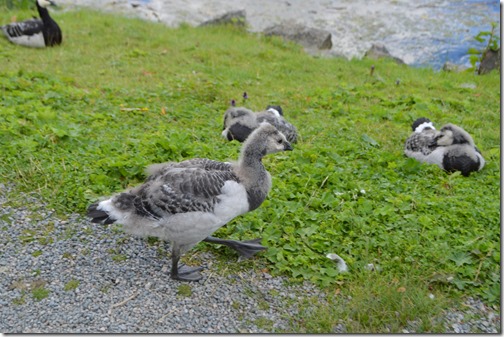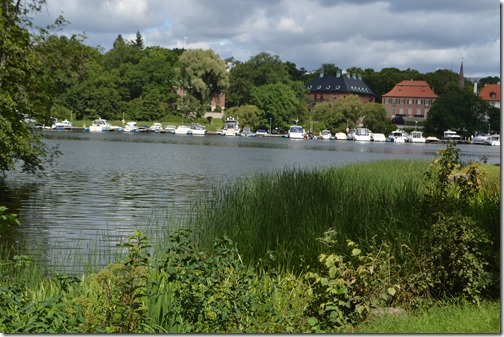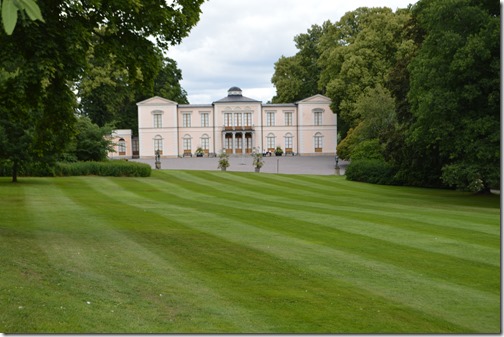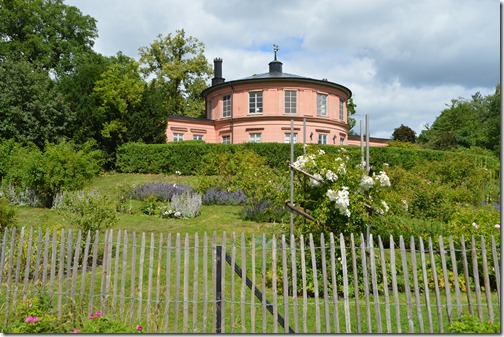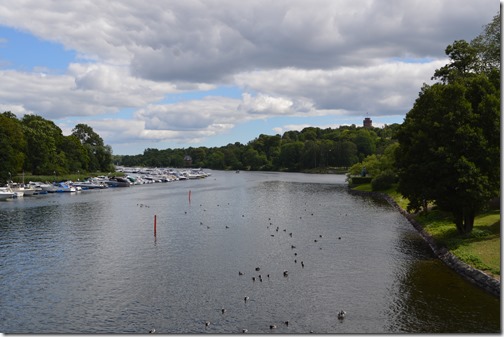A first time tourist to Stockholm is likely to visit two islands of Stockholm – Gamla Stan, the Old Town of Stockholm and DjurgÃ¥rden, the museums island and historically the Royal Game Park of Stockholm. After my post yesterday: Stockholm, I’ll be back, but probably not stay (July 18), I thought I should follow up with a walk through the island park of DjurgÃ¥rden, the area I thought was the most beautiful part of Stockholm we experienced.
Google Maps – Downtown Stockholm primary tourist areas Norrmalm, Ostermalm, Gamla Stan and Djurgarden.
The two times I have been to Stockholm, January 1993 and July 2016, I basically covered the same areas with hotel stays in Norrmalm, the area around Central Station, and sightseeing walks around the island with Gamla Stan, the Old Town where the Royal Palace is located, walks along the Strand of Ostermalm and walks around the islands of Skeppsholmen and Djurgarden. These are the natural focal points for a tourist desiring to stay near the coastal waterways of Stockholm surrounding most of the prominent hotels in the central part of the city.
Djurgården, Royal Game Park of Stockholm
Radisson Blu Strand Stockholm is a central location midway between the islands of Gamla Stan and Djurgarden. One of the criticisms I have about Stockholm is there are large city blocks filled with 6 to 8 story buildings and little greenery on many of the streets. I was surprised to see so few plants outside the homes in residential areas. As someone who desires being in green spaces, especially when staying in an urban environment, I found myself gravitating toward Djurgarden on several occasions during my five day stay in Stockholm to be in a large green space park.
Our hotel stay at Radisson Blu Strand Hotel Stockholm was about a 20 minute walk to Djurgarden along the harbor front strand.
The walk along the Stockholm Strand would probably be a relaxing stroll most of the year, but in mid-July with thousands of tourists and locals concentrating their efforts on visiting the museums on Djurgarden island, this walk was one of the more trying aspects of our stay in the city as we weaved through and around slow moving families with strollers and toddlers in tow, geriatric cruise ship day tourists and young walkers stopping abruptly for phone camera selfies.
Beautiful people in Stockholm enjoying sun and café life on the Strand.
A couple of times we moved a block off the Strand to walk the empty streets devoid of tourists and hoards, but also mostly devoid of plant life along the street.
View from short bridge to Djurgarden. Boats and harbor cafes line the Strand. Radisson Blu Strand Hotel is light colored building in center about one mile away.
Upon crossing the primary bridge with vehicle and pedestrian access to Djurgarden, there is the Nordic Museum of Swedish History and Culture. We did not make it to that museum.
Nordic Museum – Nordiska Museet, Djurgården, Stockholm
Djurgarden is a recreational and entertainment space in Stockholm with numerous museums and the Grona Lund amusement park founded in 1883. Bob Marley set the record attendance for a Grona Lund concert with 32,000 attending the reggae show in 1980.
Grona Lund seen from the neighboring island of Skeppsholmen.
The Vasa Museum is the most visited site in Sweden and holds a single massive and ornately decorated 1628 warship that sank after sailing only 1,500 meters in Stockholm Harbor due to poor construction design. The ship is 98% original and the largest wooden sailing vessel in existence from the 17th century. The museum provides an incomparable opportunity to gaze on an authentic wooden sailing ship from the days when these massive vessels allowed nations to rule the seas, trade globally and acquire empires.
Ironic that a war ship is the most visited attraction in Sweden, a nation globally recognized for its political commitment to peace.
The TBEX travel blogger conference held an evening event at the Vasa Museum for an opportunity to gaze upon this historic time capsule from the age when sailing vessels allowed European nations to rule the world.
The massive ship is the primary installation of the six floor Vasa museum with multiple view points of the 1628 war ship. This is the best preserved wooden ship of its age and the fact that it sat in Stockholm Harbor for 333 years undisturbed in the cold polluted low oxygen water until being raised in 1961 is the reason it is well preserved. The continued preservation of this ship is an ongoing effort requiring teams of scientists using latest technology to maintain its structural integrity. The ship can only be viewed from multiple levels of the museum and not boarded by visitors. There are several areas of the museum with informational exhibits and actual skeltal remains of some of the sailors who drowned with the ship.
The Royal Hunting Ground of Old is the Main City Park of Stockholm Today
Djurgarden was established as the Royal Hunting Ground in 1579. Today there are extensive landscaped gardens and woods with trails, bicycle paths and some roads. Museums occupy much of one side of the island, yet there are extensive lesser developed areas of the Djurgarden where visitors and city locals can experience green space in the dense urban environment of the Stockholm.
Barnacle goose gosling waddling back to mama.
Walking through Djurgarden and seeing people on the benches by the waterside with food, but nobody drinking alcohol is when the realization hit me that Stockholm is a city where people do not drink in public. Continued observations over the next few days confirmed my Djurgarden finding that public drinking of alcohol is not a standard practice in this city, whereas nearly all of Europe the consumption of alcohol in public is a fairly common sight.
Rosendal Palace is a prefabricated house built in the 1820s as a royal hunting lodge in the center of Djurgarden surrounded by woods. The little palace lodge looks from the exterior to be some kind of movie set structure. The tour guides were sitting out front on the bench waiting for visitors as we passed. In retrospect, we should have taken a private guided tour to see the interior furnishings of this nearly 200 year old royal palace museum.
Another irony of Stockholm and Sweden in general is the presence of what seems to be a vibrant gardening culture in park areas of every Swedish town I have visited where there are public gardens and volunteers working in city parks, yet some of the residential areas of Stockholm I walked through in Ostermalm and Norrmalm lacked any flowers, shrubs or trees outside buildings like I have frequently seen throughout cities like Amsterdam, Copenhagen and London. On many streets of Stockholm I was struck by the lack of any greenery along the streets in residential and commercial areas with long stretches of concrete pavement and sidewalks surrounded by six to eight story buildings.
Near the Rosendals Tradgard I saw a woman picking berries in the forest and her bucket appeared to be full with blueberries or something similar looking.
Kelley and I came across a gated hedge row maze and entered. As we wound through narrow rows of shrubs, we soon realized that this maze had openings at the height suitable for four foot tall children and we needed to exit before getting too far gone into the interior with hunched backs.
Djurgarden will be familiar to most tourists as the island of museums where you will find the Vasa, Nordic Museum, Abba The Museum, and Grona Lund amusement park. Venture to the other side of Djurgarden and deeper into the island trails and you will find woods, gardens and plenty of green space for solitude in contrast to the dense urban building environment in Gamla Stan and other areas of the waterfront frequented by tourists.
We only ventured half way across the island and could have easily walked for several more hours on the park trails if we had dressed properly for the excursion. Our limiting factor to walking more of the island was our sandal shoe wear and the fact that trails in Djurgarden tend to be small pebbly gravel paths. I had to stop about every 100 feet to work pebbles out of my sandals and by the time we had spent a couple hours walking around Djurgarden I was in serious pain with each step feeling like pins in my feet. We went out to Djurgarden a couple more times after our first excursion. I made sure to wear tennis shoes on subsequent trips.
Barnacle geese cruising the waterway of Djurgarden.



